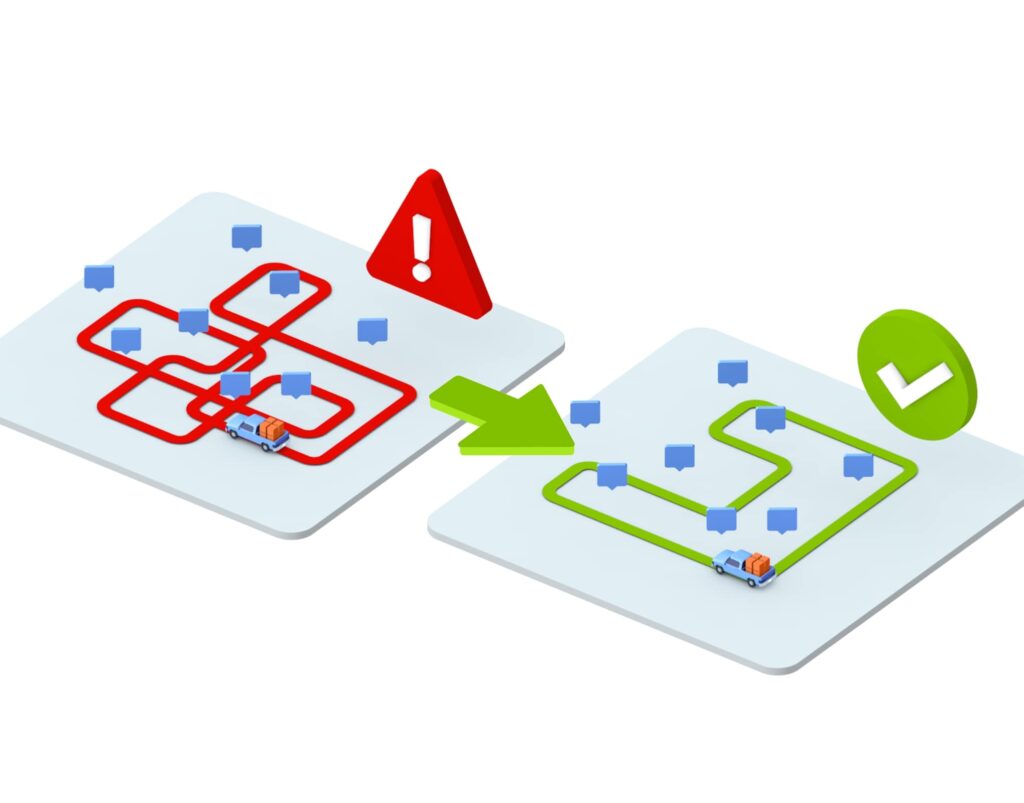
In today’s fast-paced business landscape, fleet productivity plays a crucial role in ensuring efficient and cost-effective operations. For businesses that rely on transportation, finding ways to optimize routes and streamline fleet management can significantly impact the bottom line. Route optimization is a powerful strategy that can lead to reduced operational costs, improved customer satisfaction, and enhanced overall productivity. In this article, we will explore the key steps to improve fleet productivity with route optimization.
Table of Contents
Utilize Advanced Route Planning Software

Source: fleetprofitcenter.com
The first step in optimizing fleet productivity is to invest in advanced route planning software. Modern technology offers sophisticated solutions that can efficiently analyze data, identify optimal routes, and adapt to real-time changes. These software solutions consider various factors such as traffic patterns, weather conditions, vehicle capacity, and delivery time windows to create the most efficient routes possible.
Centralize Fleet Data
To make informed decisions, it is crucial to centralize all fleet-related data, which is where fleet management software development comes into play. This includes information about vehicles, drivers, historical routes, customer preferences, and delivery schedules. By leveraging advanced fleet management software, fleet managers can efficiently centralize and analyze this data, gaining valuable insights into past performance. These insights then enable them to make data-driven improvements to future routes, leading to enhanced productivity and cost-effectiveness.
Real-Time Monitoring and Communication
Real-time monitoring and communication are vital for effective route optimization. With the help of GPS tracking and telematics technology, fleet managers can track vehicle locations and performance in real time. This data enables them to address any deviations from planned routes promptly and make adjustments as needed. Moreover, constant communication with drivers allows for seamless coordination and helps in handling unforeseen events efficiently.
Optimize Loading and Unloading Processes

Source: globaltranz.com
Efficient fleet productivity is not just about finding the best routes; it also involves optimizing the loading and unloading processes. When planning routes, consider the sequence of stops to minimize the time spent on loading and unloading goods. Additionally, train drivers and support staff on best practices for cargo handling to expedite these processes further.
Prioritizing Driver Well-Being
Ensuring the well-being of drivers is a critical component of the transportation industry. The focus on driver well-being goes beyond compliance with regulations; it’s about fostering a work environment that values the health and satisfaction of every individual behind the wheel. Services like iCompario acknowledge this necessity, offering tools and resources that support companies in this vital aspect.
– Work-Life Balance: Maintaining a healthy work-life balance is crucial for drivers. Companies should structure work schedules to allow adequate time off, ensuring drivers can rest and spend time with loved ones. This balance helps reduce burnout and keeps drivers alert and focused when on duty.
– Rest Breaks and Sleep Quality: Regular rest breaks during shifts and sufficient sleep between them are non-negotiable for driver safety. Employers must enforce rest period policies and provide resources for drivers to manage their sleep health effectively.
– Amenities and Support: Access to clean and safe amenities on the road can significantly enhance a driver's working conditions. Companies should also offer support systems for mental health and stress management, recognizing that driver well-being encompasses both physical and mental health.
Analyze and Adapt

Source: support.route4me.com
Route optimization is an ongoing process that requires continuous analysis and adaptation. Fleet managers should regularly analyze performance metrics and gather feedback from drivers and customers. Identify areas for improvement and be open to making necessary changes to further enhance fleet productivity.
Conclusion
By implementing route optimization strategies and leveraging advanced technology, businesses can significantly improve fleet productivity. Efficient route planning not only reduces operational costs but also enhances customer satisfaction, leading to a competitive advantage in the market. Embracing these practices and fostering a culture of continuous improvement will undoubtedly pave the way for a successful and productive fleet management system.







